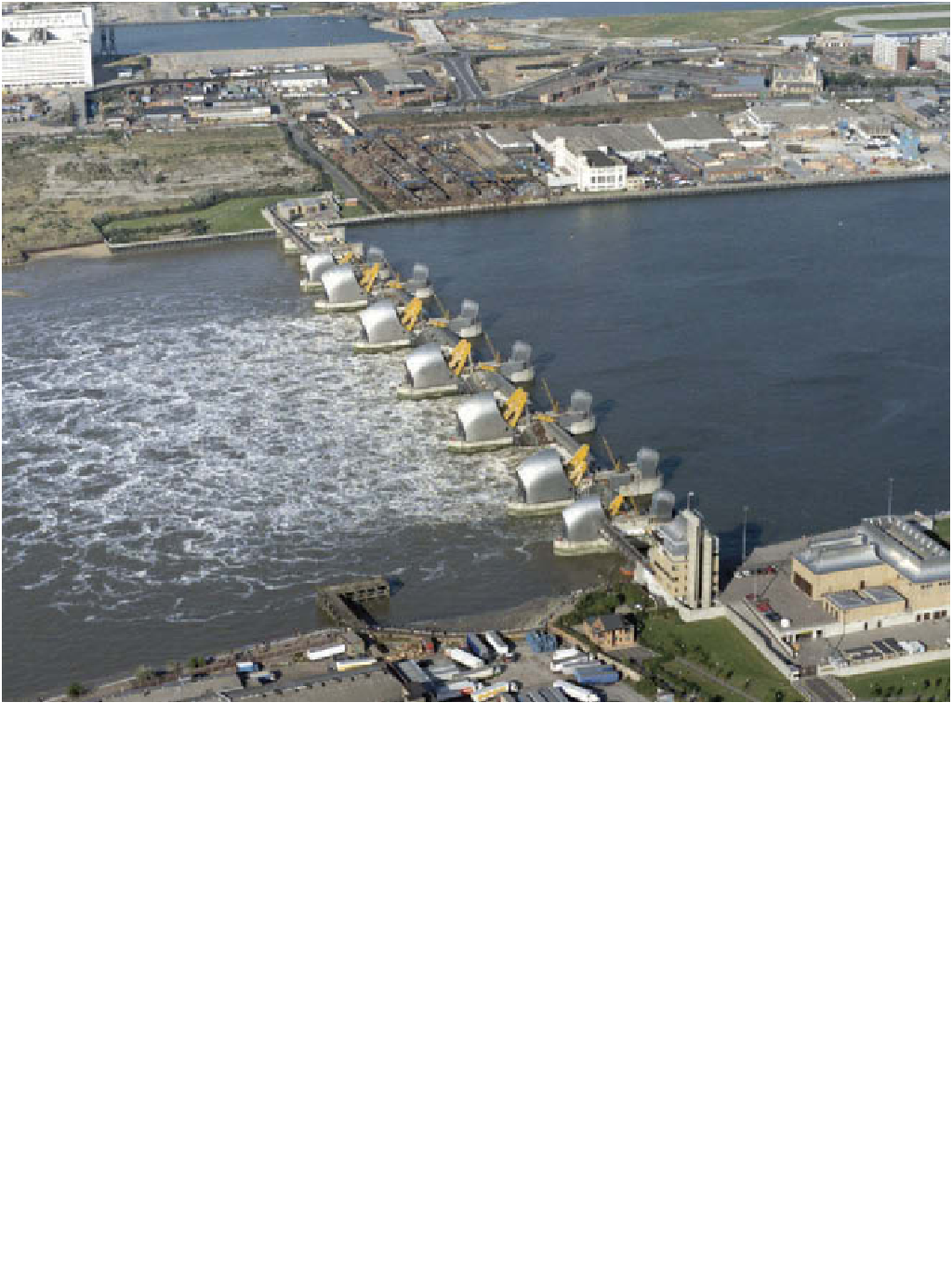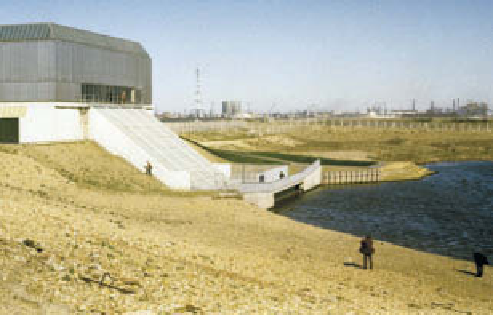Geoscience Reference
In-Depth Information
Plate 17.7
The Thames Barrier, in a semi-closed position, with central London to the left and a small part of the incoming tide
being let through.
Photo: Environment Agency
THE GLOBAL COASTLINE
Whatever the nature and controlling mechanisms of indi-
vidual coastal landforms and landsystems, four universal
influences are recognized in coastline patterns at the
global scale. The youth and vigour of sea-floor spreading
and continental margin orogenic activity impart mor-
photectonic control. Global tide and atmospheric circu-
lation establish tidal range and wave energy patterns,
complicated by continental coastlines. Tectonic and cli-
matic causes of sea-level change, varying temporally and
spatially, create patterns of emergent and submergent
coastlines.
Tidal cycles
refer to the daily number of tides (
Figure
equator would experience equal semidiurnal tides. This
pattern is upset by the continents, and a lunar orbit
house at Thamesmead on the river Thames, downstream of
the Thames Barrier. The pond is below the level of the Thames
beyond the embankment.
Photo: Ken Addison










































